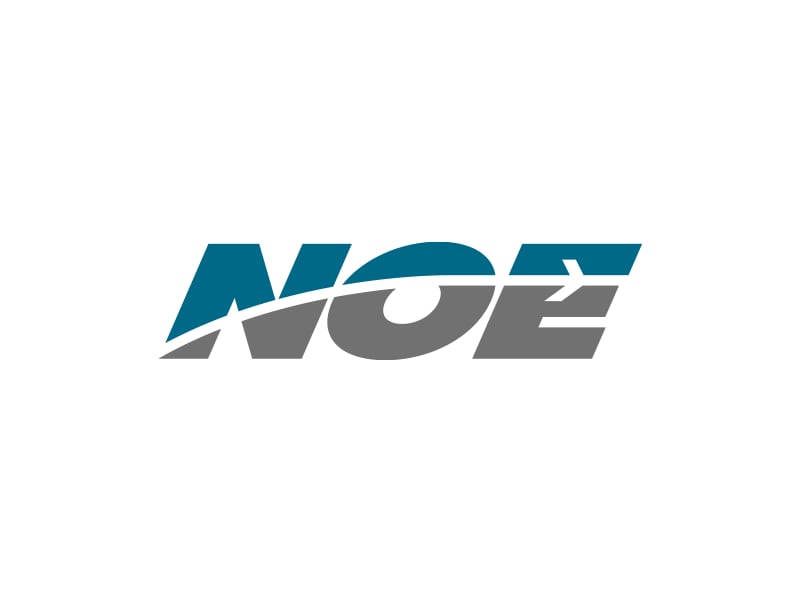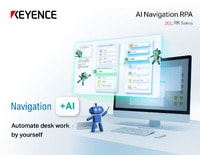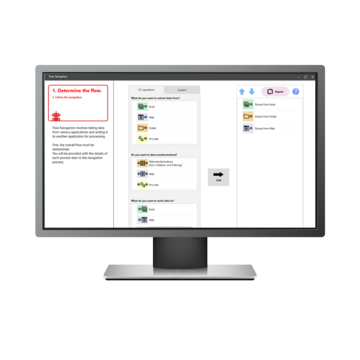RPA (Robotic Process Automation)
NOE Co., Ltd.

Travel agency automates 30 hours of work per month and streamlines business processes with RK!
NOE Co., Ltd. has introduced an RPA (business automation) tool, KEYENCE RK, with the goal of reducing employee workload while maintaining service quality. By automating many simple tasks, they have managed to reduce work hours while also using it to review internal operations. We spoke with the managers of the Sales Planning Department and Corporate Strategy Department to learn more about the reasons for introducing RK, its usage, and its benefits as a tool.
About the Company
NOE Co., Ltd.
NOE Co., Ltd. is a well-established travel agency founded in 1960 with offices in Tokyo, Osaka, and Aichi. As the 41st registered travel agent, which is considered to be the first among thousands of travel agencies, they primarily provide services related to overseas flight ticket issuance. They have a wide range of business partners, including automobile-related manufacturers, broadcasting and advertising-related companies, and government offices. They also sell overseas package products under the brand name “Sky Tours,” and over the years, have supported many travelers and businesspeople.
We’re here to provide you with more details.
Reach out today!

Automating Accounting and HR Tasks
How Does Your Company Use RK?
“We use RK to automate so-called “simple tasks” performed in Accounting and Human Resources. In terms of Accounting, it involves confirming receipts and inputting them. We download the CSV file of deposit data from the bank’s website and enter it into the core system and accounting system. Everything up to the point of creating the invoice is done using RK. In Human Resources, it is mainly used for labor management. Specifically, we download data from a cloud-based attendance management system, create a list in Excel, and send it to managers via email.
Currently, there are 6 scenarios. I run five of them daily and one once a month using a dedicated computer.”
Reducing Employee Workload
What Circumstances Led You to Introduce RK?
“We are fortunate to have received high praise from many of our customers for our flexible response capabilities. However, this was largely due to the efforts and experiences of each employee. In other words, it was not only dependent on the individual, but also required a great deal of effort.”
“At that time, due to the spread of the new coronavirus infection, the amount of information we provided to our customers, including information on vaccinations, entry restrictions, and visas, increased dramatically. The workload of each employee was already high, but with the increase in volume, we were unable to handle the work with the current personnel structure. If things were not done properly, this could cause an inconvenience for our customers.”
“Therefore, while leveraging our strength in responsiveness, we decided to launch an in-house Digital Transformation (DX) team to explore digitalization, especially automation using RPA, in order to make the work as efficient as possible.”
“I attended an IT-related exhibition and heard from 5 or 6 companies regarding RPA software – KEYENCE’s RK software was among them. I decided to go with RK partly because training and support were already included in the monthly fee, and there was no minimum contract period.”
“This was of particular interest because I wasn’t quite sure we would be able to use RPA immediately after introducing it. Since we don’t have a lot of specialized knowledge, we thought we would need a lot of support in order to learn how to think programmatically and be able to create automation scenarios within the software.”
Exploring New Automation Options and Learning From Challenges
How Do You Rate the Support You Received?
“I rate it highly. I was able to acquire the basic way of thinking and operating methods just through the initial training I received. After that, if I had any questions, I could easily reach out via email. Their responses are quick, and sometimes they even create sample scenarios and send them to me, which is very helpful. I get the impression that they not only help solve problems but also help people develop.”
So, With the Help of Such Support, Were You Able to Achieve the Automation You Originally Envisioned?
“No, we were unable to automate the work that we had originally planned. As I mentioned earlier, we initially wanted to automate work related to customer service and sales. However, there were too many steps with dependencies to automate these tasks.”
“For example, when performing tasks such as ticketing and visas, we need to access GDS (airline reservation system) and visa application forms and enter data. However, that system had many screen transitions which branched depending on the input content, and sometimes had robot countermeasures, so there were several issues that had to be overcome to automate it. Additionally, our Excel file wasn’t formatted properly for RK to acquire data, with cells being merged and data positions not being unified.”
“We realized that there were many things we needed to do to automate those processes, such as thinking more deeply about algorithms and standardizing internal operations and data. Therefore, we decided to start with accounting and human resources, which have more straightforward processes.”
Why Did You Continue to Use RK Even Though You Were Unable to Automate the Processes You Originally Considered?
“After trying out RK, I felt that it had the potential to automate a variety of tasks in addition to what I had originally thought of. Of course, we haven’t given up on automating the business and sales tasks either. We are slowly moving towards that goal as we adjust and refine our processes.”
Workload Reduction and Process Improvement
Please Tell Me About the Business Impact of Implementing RK
The two main benefits we’ve seen are:
- Simple tasks were reduced by approximately 30 hours per month: Each automation scenario we created would save about 10 to 20 minutes, totaling approximately 30 hours per month. “In the future, I would like to build additional scenarios so we can eliminate simple tasks as much as possible and reduce the amount of labor required by employees.”
- Re-evaluation of internal processes: “In order to really take advantage of RPA, operations and data needed to be standardized within our group. This gave us a good opportunity to review our internal operations and processes. While there are variety of approaches to reviewing, setting the goal of integration into RK allowed for specific actions, like detailed measures such as unifying formats across spreadsheets. This also helped us to uncover additional areas we hadn’t originally considered that could benefit from automation, such as notification of ticketing deadlines.”
Designed to Be Used by Anyone
What Were Your Thoughts on Usability Once You Actually Worked With the Software?
“First, I liked that the menu was color-coded by category which made it easy to read and follow. Additionally, the absence of excessive programming terminology and the straightforward screen layout made it easy to understand. One of the biggest is the way that you build the automation scenarios. Each one can be created through simple drag-and-drop operation, the order of each step can be freely adjusted, and you can collapse scenarios that get too long. If you use App Operations (a function that records keyboard and mouse actions), then it’s easy for even individuals with no programming or systems knowledge to create scenarios. If it’s simple, it can be made really quickly, so I’m hoping that in the future we can deploy this to our people in the field, like Sales, to use.”
What Types of Industries Would You Recommend RK for?
“We highly recommend it not only to travel companies like ours but also to businesses across various industries. Particularly for roles involving numerous simple tasks, implementing RK can significantly streamline your daily workflow, saving time and alleviating individual workloads. You may be confused about how to use RPA at first, but as you become more familiar with it, you’ll start to realize just how many areas of your business can benefit from it. It may even give you an opportunity to consider how to change your business processes so that you maximize your ability to automate.”
Future Outlook
What Are Your Future Plans for RK?
“Our immediate objective is to advance the automation of tasks related to business and sales, aligning with the original intent of its introduction, all while undergoing a comprehensive review of our operations. If our current human-hour productivity stands at "1," our future ambition is to elevate it to "10" without compromising the quality of our services.”
“If we can boost our productivity, then it will grant me the opportunity to broaden the scope of our services, ensuring even greater satisfaction for our customers. Being a comprehensive support provider for not just airline tickets and visas but also for accommodations, rental cars, Wi-Fi, and other travel and business essentials would be a significant leap forward.”
“The seeds of automation using RPA are only beginning to sprout, and I eagerly anticipate the fruits it will bear in the future. We are still learning how to use the full capabilities of RK, and we look forward to KEYENCE’s seminars and proposals that may lead to new ways to leverage RK in our business.”
Contact us to learn more about how our advanced technology can help take your business to the next level.
Contact Us
Related Downloads
Related Products
Scroll



